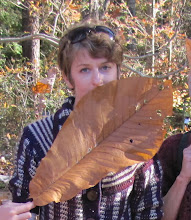Yesterday I ventured out to the Kanab Creek Wilderness Area in the Kaibab Forest to hike Snake Gulch. I had heard about this hike from my boss and from an NPS Ranger and headed out with some driving directions and a brief description of the hike. I knew if I hiked out about 6 miles I would be graced by ancient images painted on the rock walls.
Snake Gulch is a sinuous tributary to the Grand Canyon, although all that is left is a wash. Although water must have run through the area more consistently for the canyon to be created and to support native communities for thousands of years. Most of the pictographs recorded are from the Basketmaker culture who are said to have lived in the area from about 2,000 B.C. to 500 A.D. before the Anasazis and then Ancestral Puebloans arrived.
I left for the hike a bit later than I would have like and tossed some snacks and water in my bag and hit the trail. Although it was cool on the North Rim, this was at a lower elevation with no shade and the sun was hot and dry. The trail followed the wash between the canyon walls and it was overgrown with thorny bushes, sometimes reaching shoulder height. For parts of the trail, I was able to step around the bushes but for others, the bushes covered to ground from wall to wall and I cringed as the thorns poked through my pants, scratching my legs (and I remembered that what I walked through as I headed out, I would go through again coming back).
After about 2 hours of fast hiking though the bushes and heat, I sill had yet to see a pictograph. Had I taken the wrong trail? But this was the only one. I took a few more steps and looked up to the right wall and my breath caught as I saw my first pictographs. They were little brick-red triangles with circle heads and stick arms and legs. I just stared, watching the ghosts of these people who had once populated this land create their portraits as they stood on the rock ledge.
I continued to find more and more, some walls utterly covered with little figures and symbols. Some I found almost laughable, looking like little monsters. What did these mean? Were they in fact representations of a devil figure? I can only imagine what these primitive symbols and pictures meant to the Basketmakers and Puebloans. I walked further, not sure how many miles I had hiked.
Finally I turned around, not seeing any more pictographs in the vicinity and worrying about making it back to the car before sunset. I was hot and tired and hungry when I saw my little steel and rubber box oasis with cushioned seats, air conditioning and extra water. How funny it is to me that I feel relief when I see my car. I love the outdoors and I love being in nature, but the modern comforts of today are ingrained in my being. If I had been a Basketmaker, painting figures on the rock walls, and could see what would come in the future, I think that I would have been scared.
Subscribe to:
Post Comments (Atom)




Gosh, so interesting! The pictographs (What's the difference between these and petroglyphs -- maybe one is painting and one is etched?) look so well preserved that it's hard to believe that they are so old. Keep on exploring. <3
ReplyDelete